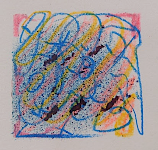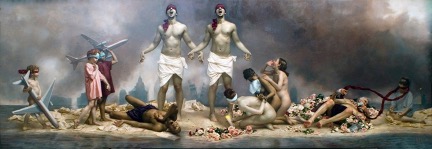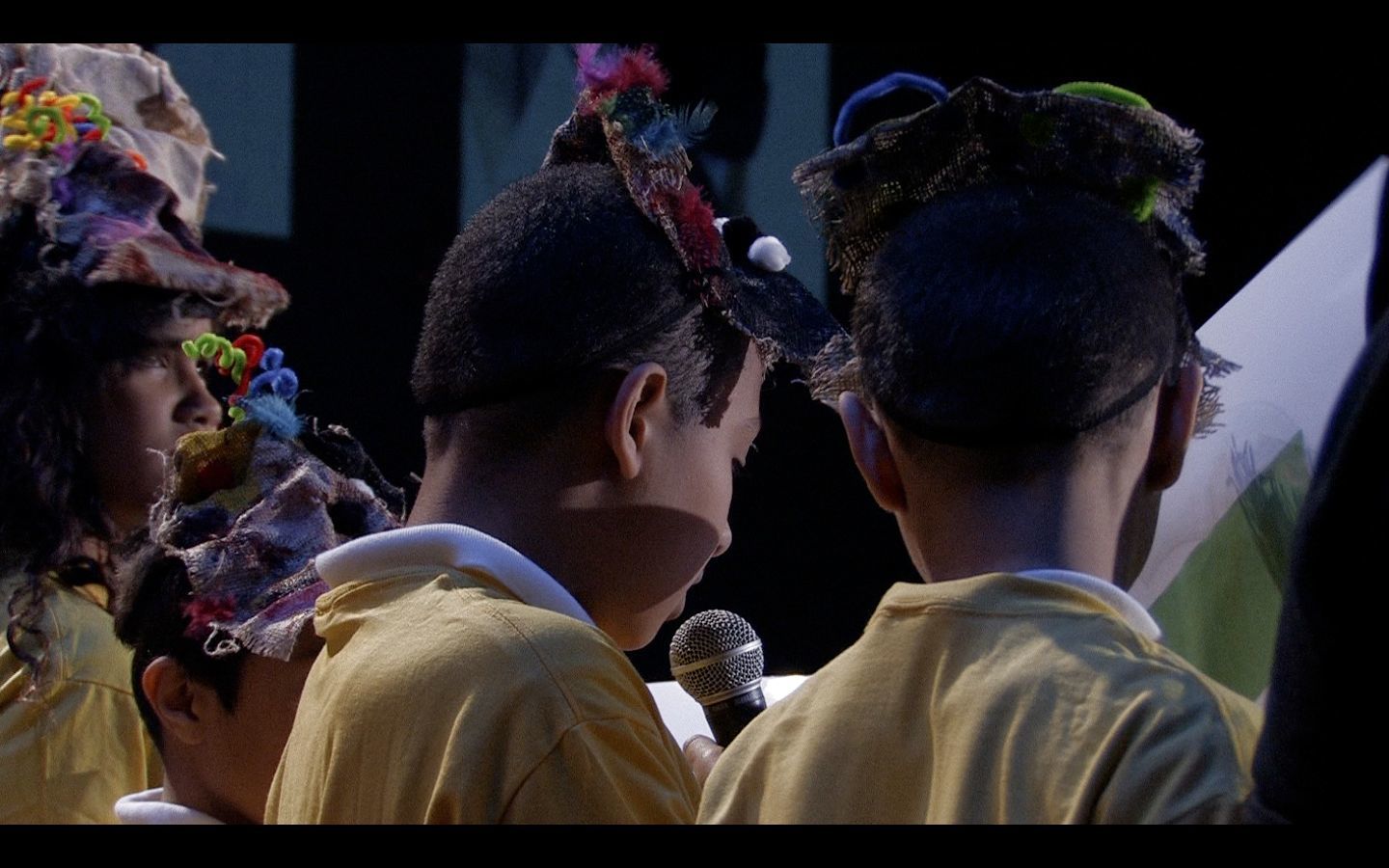The Seed of Voice

Painting by Barbara Clark, 2009
Photo by Roy Temple
Aesthetic Education Program Models: Teacher as Artist: Building Empathy, Compassion & Moral Imagination for Children

Unmasking 9/11 Emotions: NBMAA (2008)
(video to come)
Clark, B. A. (March, 2008). Unmasking the 9/11 Mural by Graydon Parrish through poetic compositions, Aesthetic education and masked emotions performance. Presented with CCSU elementary education students at UMC CCSU “Night at the Museum:” New Britain Museum of American Art.
Clark, B. A. (March, 2009). A Landscape of Thinking. Inter-district partnership mural presented in UMC New Britain Collaborative on the Cutting Edge: University, Museum, Community, Collaborative: New Britain Museum of American Art.
Clark, B. A. (February, 2009). A Landscape of Thinking: The Storytelling of Personal Narratives in Relationship to a Masterpiece. Presented to children of New Britain and Farmington, CCSU elementary education students, parents, teachers and community members: New Britain Museum of American Art.
Clark, B. A. (March, 2008). Unmasking the 9/11 Mural by Graydon Parrish through poetic compositions, Aesthetic education and masked emotions performance. Presented with CCSU elementary education students at UMC CCSU “Night at the Museum:” New Britain Museum of American Art.

Parrish, G. (2001). The Cycle of Terror & Tragedy, New Britain Museum of American Art

KIVA Song

The teacher
candidate’s voices acknowledge the
critical importance in shaping how
pre-service teachers perceive
themselves as creative,
compassionate teacher leaders of
change in education.
One future teacher stated, “We as
future teachers can change the
world. The idea starts small and
grows.”
Shared imaginative action within a
compassionate community commons
reveals creative and innovative
action.
“Imagination, that form of thinking
that engenders images of the
possible, also has a critically
important cognitive function to
perform aside from the creation of
possible worlds. Imagination also
enables us to try things out-again
in the mind’s eye-without the
consequences we might encounter if
we had to act upon them empirically”
(Eisner, 2002, p. 5). As a result of
participating in a compassionate
community commons to end
homelessness, students reveal
possibilities for transformation.
One pre-service teacher’s voice:
I have found my inner light
and it makes me want to go out there
and make a difference. Since I was a
very young girl, I knew that I have
always wanted to be a teacher. But
now I feel even more than that. I
feel like I can be a teacher and
change the world. I want to show
students how school can be a
learning celebration rather than
something they have to attend
everyday because it’s mandatory. I
want to create a classroom that is
memorable. My students will be able
to count on me for anything because
I will never speak negatively of a
child. When learning is memorable to
students they will remember what
they have learned for the rest of
their lives. As a future teacher, I
want to be the change I wish to see
in the world. Can you hear my voice?
All references
to outside sources can be found in
the bibliography sections of our
published work.